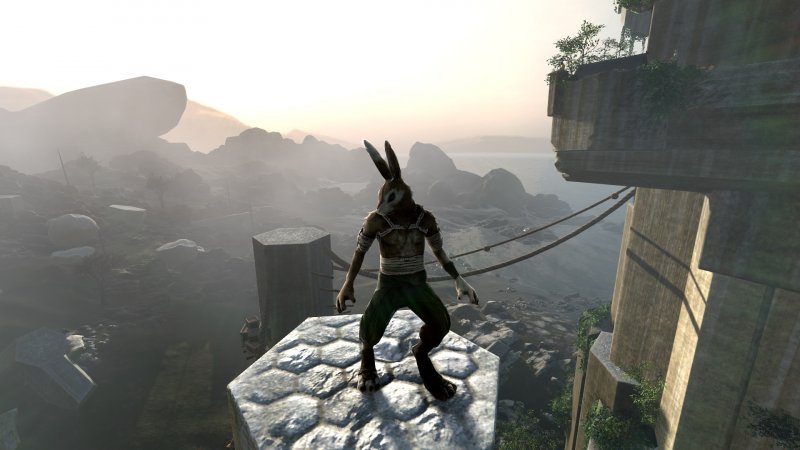The story of Overgrowth begins with the success of Lugaru, the first commercial title of Wolfire Games, software house formed at the time by only David Rosen, independent developer very active and appreciated on the scene. It was 2005 and the many consents for that action game focused on Ragdoll physics convinced Rosen to expand the formula, making it begin the development of Overgrowth.
Since then the water under the bridge has really gone a lot, with the independent scene that in the meantime has carved out an important place on the videogame scene and with some technologies, just like the physical ragdoll, which have ceased to amaze and have been overtaken .
Overgrowth was announced in 2008, after Rosen had already dedicated many months of development to it. In 2013 it was launched in the Early Steam Access, becoming finally playable and since then, after a disproportionate number of updates, it was finally published in a final version this month (known for posterity: October 2017).
GAME SYSTEMS
The chronology made in the introductory paragraph is not an operation as an end in itself, but serves to make understand a fundamental concept that we will develop along the rest of the review: Overgrowth carries the weight of an old concept, dragged for years and years; concept that penalizes it in several aspects. But let’s not hurry up. The game is divided into two campaigns, both starring Turner,
the anthropomorphic rabbit already seen in action in Lugaru. One of the two campaigns is precisely the revival of that of Lugaru, while the other, the main one, is completely new and longer. Let’s say that to end both together it takes about three hours.
Basically we are faced with a third-person action divided into very short scenes, whose objectives are always the same: kill a certain number of enemies, defeat a boss or climb some construction using the agility of Turner. In fact, our rabbit is not only a martial arts master, but also able to make long leaps, to climb and run on the Prince of Persia style walls: The Sands of Time.
Just these incredible features have allowed Rosen to conceive of very large and spectacular platform levels, although graphically Overgrwoth does not make the miracle cry out because of three-dimensional models not very detailed and a great lack
of inventiveness of the scenarios. Above all, the platform phases are generally good, generally built vertically, while the other chapters, more closed, apart from a few exceptions, turn out to be decidedly inventive.
Obviously the focus of the game is the combat system, borrowed from that of Lugaru and completely based on contextual actions: the shots brought change according to the position, the direction given, the height of the view, the number of enemies we have around and etc. In addition to attacking, Turner can also counterattack or use weapons (knives, swords, bos, spears, and so on).
The enemies that will face are other rabbits, mice, cats, dogs and wolves, all obviously anthropomorphized. There is no graphical interface visible on the screen, so to know the status of Turner it will be necessary to read the signs on his body (wounds, posture and so on).
Like Lugaru, Overgrowth also integrates a simple stealth system, which allows you to get behind the enemies to smother them or cut their throats. In short, Overgrowth on paper is a really varied title, but in practice it is not.
TEN YEARS TO DO THAT?
One of the biggest limits of Overgrowth is its structure. We have already told you that the campaigns are divided into very short chapters, all with different settings, which run out in a few minutes, when not exactly seconds.

